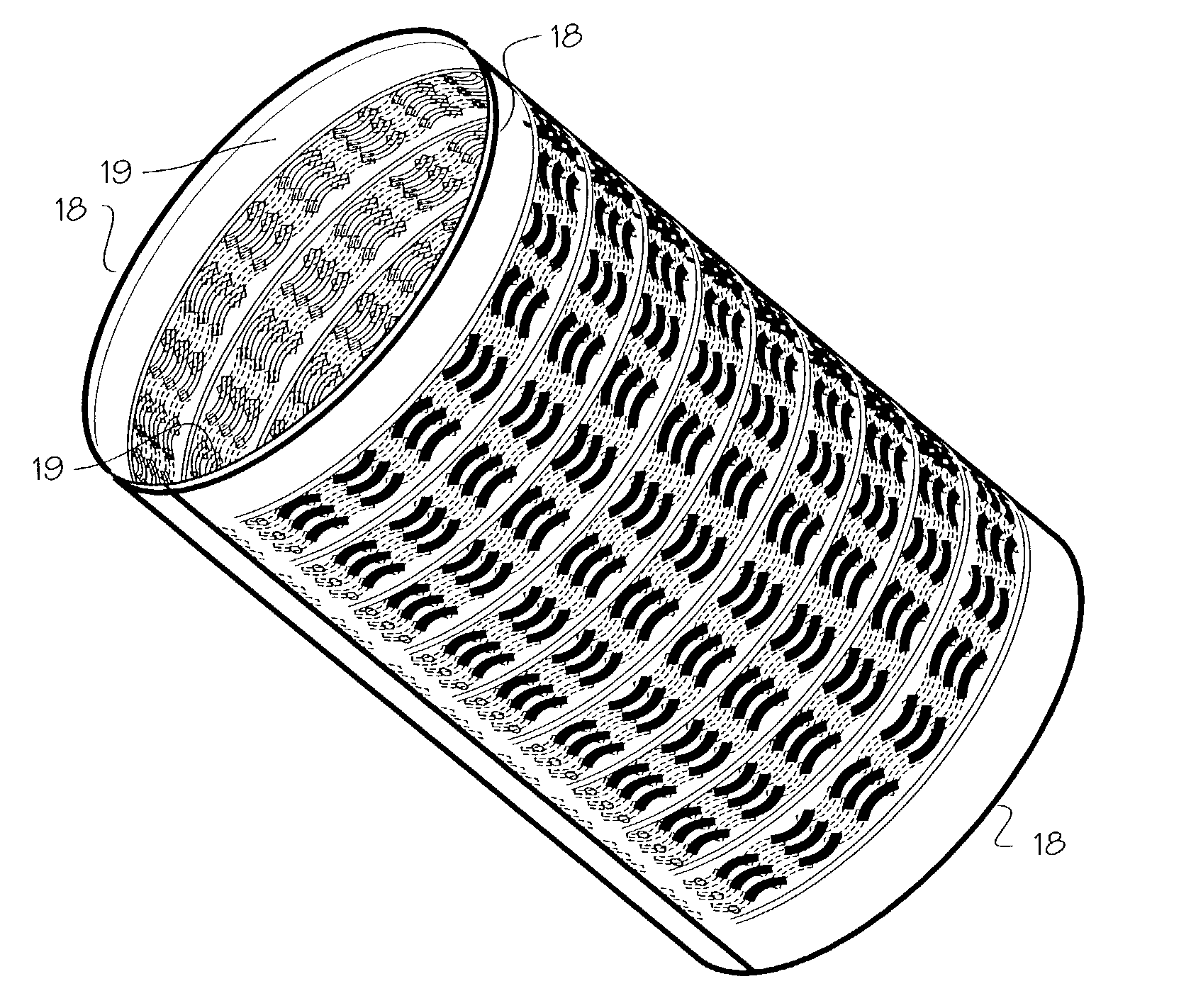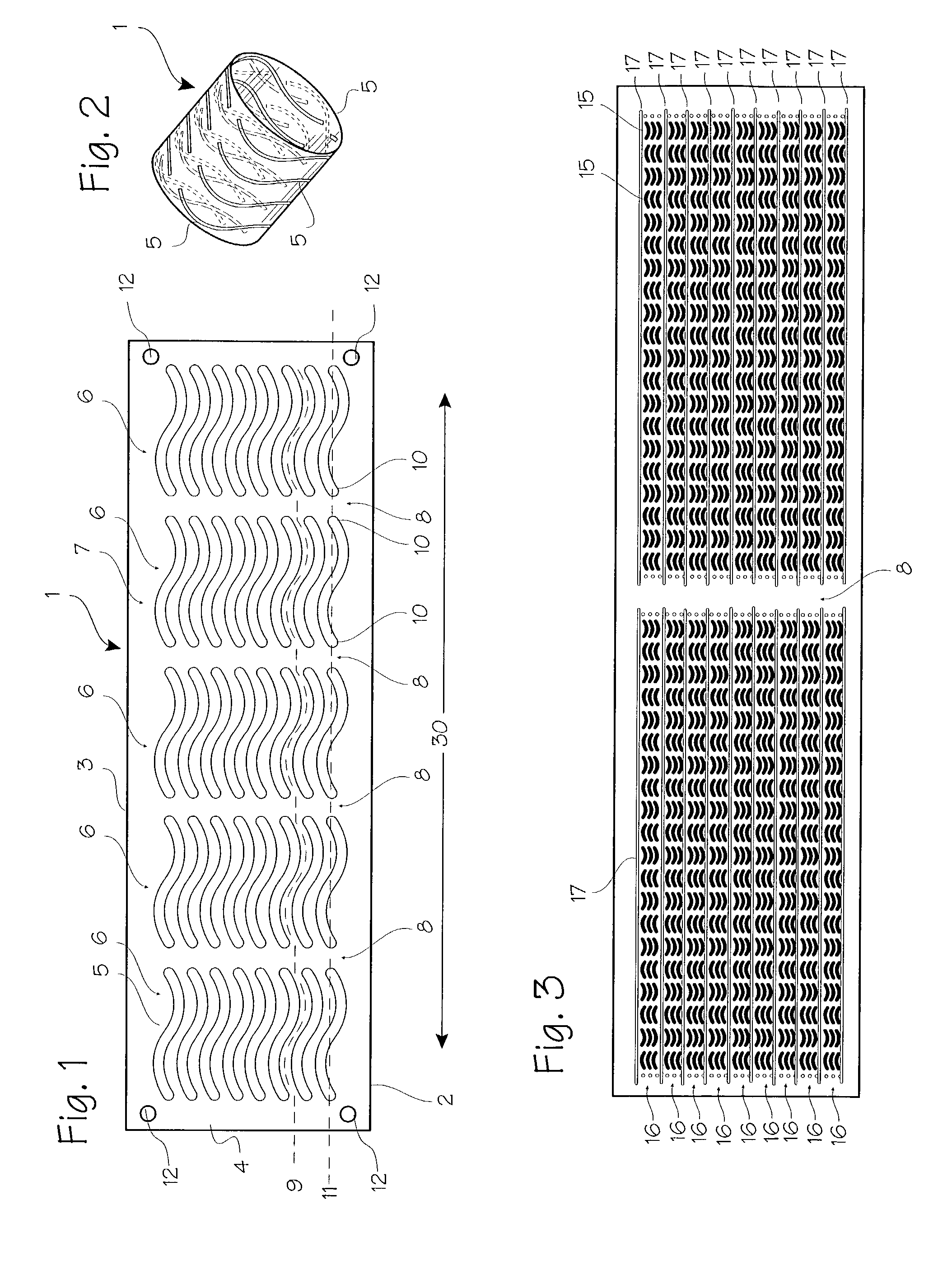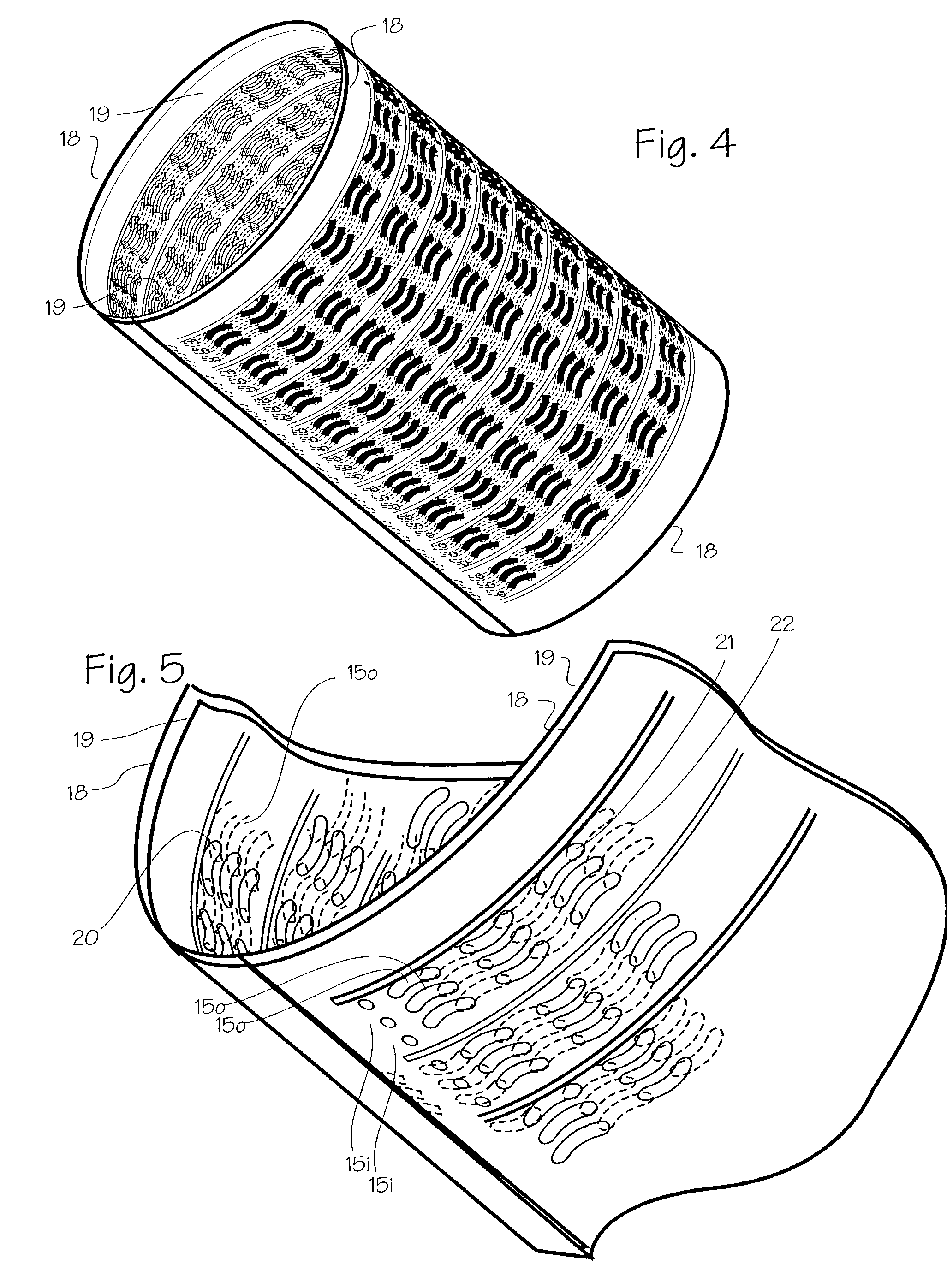Rolled stent with waveform perforation pattern
a waveform and stent technology, applied in the field of vascular disease treatment, can solve the problems of clots and coils falling out of the sac, stroke or the symptoms of stroke, and achieve the effect of immediate and complete sealing
- Summary
- Abstract
- Description
- Claims
- Application Information
AI Technical Summary
Problems solved by technology
Method used
Image
Examples
Embodiment Construction
[0017] FIG. 1 shows a basic form of the stent 1. The basic embodiment comprises a sheet 2 of Elgiloy.TM. about 0.0025 to 0.025 mm thick (0.1 mils to 1 mil, or 0.0001 to 0.0010 inches). Referring to FIG. 1, the wrap length represented by transverse edge 3 will be about 6-75 mm, allowing the stent to expand to diameters from about 1 mm to about 6 mm with approximately two to three layers after expansion. The bridge length represented by axial edge 4 (or the longitudinal edge) will vary according to the width of the aneurysm, occlusion or other defect which must be bridged by the stent, and may vary from 2 to 20 mm, for example. The stent is tempered or formed so that it resiliently unrolls and expands to a diameter of approximately 1 mm to 6 mm, and provides a slight compliance mismatch with the intra-cranial arteries which have internal diameters of about 1 mm to 6 mm.
[0018] The stent may be formed of Elgiloy.TM., nitinol, stainless steel, plastic or other suitable material. The sten...
PUM
 Login to View More
Login to View More Abstract
Description
Claims
Application Information
 Login to View More
Login to View More - R&D
- Intellectual Property
- Life Sciences
- Materials
- Tech Scout
- Unparalleled Data Quality
- Higher Quality Content
- 60% Fewer Hallucinations
Browse by: Latest US Patents, China's latest patents, Technical Efficacy Thesaurus, Application Domain, Technology Topic, Popular Technical Reports.
© 2025 PatSnap. All rights reserved.Legal|Privacy policy|Modern Slavery Act Transparency Statement|Sitemap|About US| Contact US: help@patsnap.com



